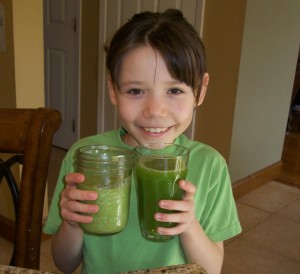
Have you already made the switch to eating a healthier diet? Fantastic! Now, what about getting your kids on board as well? Not only can that be challenging, it can seem like an outright battle at times. It’s our gluten-free, no-dairy breakfast vs. their cherished bowl of sugar puffs! So what’s the best way to face that challenge?
There are plenty of ways to gently assimilate your kids into healthy eating habits. The main problem is getting it past their taste buds! That’s why a slow and easy approach might be better than just replacing everything they are used to—no matter how tempting that is for you! An all or nothing approach might work for you, but you can’t expect your kids to handle it in the same way.
One way to introduce your kids to healthier habits is by educating them. Let them know that you would like to enlist their support for eating healthier. Once they understand that you need to make this change in your life and that it’s important for you, they may be more supportive and try to help in whatever way they can. Of course, they can help you best by not having in the house any of those foods that would tempt you. Let them know how much it would mean to you to have healthier alternatives in the house. Obviously, it won’t be exactly the same foods they love but explain to them that you’ll find good replacements that they’ll like too. It will take some getting used to, but the important thing is that you can face that challenge together.
You can also remind them that these changes will make them feel better. It’s important that they know what your body is going through and why you need to make these changes, whether it’s because of cancer or another illness or a health scare. You don’t need to overwhelm them with information or scare them about what the food they are eating is doing to them. Simply try educating them about what they are putting into their body and what changes they will be able to see. Have them make a list of anything at all that might be bothering them, whether it’s colds, headaches, congestion, fatigue, anxiety or acne. They may start to notice that they feel better as well with some of the changes. If they can start making the connection now between the foods they are eating and how it is making them feel, they’ll be more likely to want to stick with those changes.
Another gentle approach is to slowly start substituting their regular foods. A good place to start might be with milk. Try blending coconut or almond milk into their regular milk. Maybe at first you replace 15% of the milk, then 30% and then 60%. Before you know it, they’ve already become used to the new taste! Then there are all those breakfast foods they love so much. Most of those things— like cereals, bagels and waffles—can also be found gluten-free. And what kid doesn’t love pasta! Well, try giving them gluten free pasta or quinoa with their old favorite toppings, just to get them used to it.
The other big thing in our house is smoothies. It’s a great way to get lots of nutrients into them and they taste great. My girls drink smoothies for breakfast. They love them. Kelsey didn’t at first, now she asks for it if I wind up having to skip a day or two. They feel better when they have them. Their energy is more balanced, they’re calmer and think more clearly during the day. That’s especially huge for a teenager. I didn’t even tell them at first what was in them. You can start with a more fruit based smoothie with coconut milk, cucumber, vegan protein powder and fruit. After they are used to it, keep adding in more of the veggies and even a greens powder then start reducing the fruit. Fruit has a lot of sugar in it, which can raise their blood sugar and then they’ll crash later. You can swap out beef meatballs with organic turkey meatballs, do a stir-fry with organic free-range chicken or even try a quinoa recipe. There are many options to do it in a way that they can still enjoy. These are just a couple of ways to have them start eating healthier.
The key is to make it fun for them, get them involved and let your kids know that they can still have their favorite foods. Most important is that they still have their familiar meals. Little by little, your kids will be getting healthier without feeling like they’ve been ambushed into it. And you can feel good that you and your family are being healthy together!










